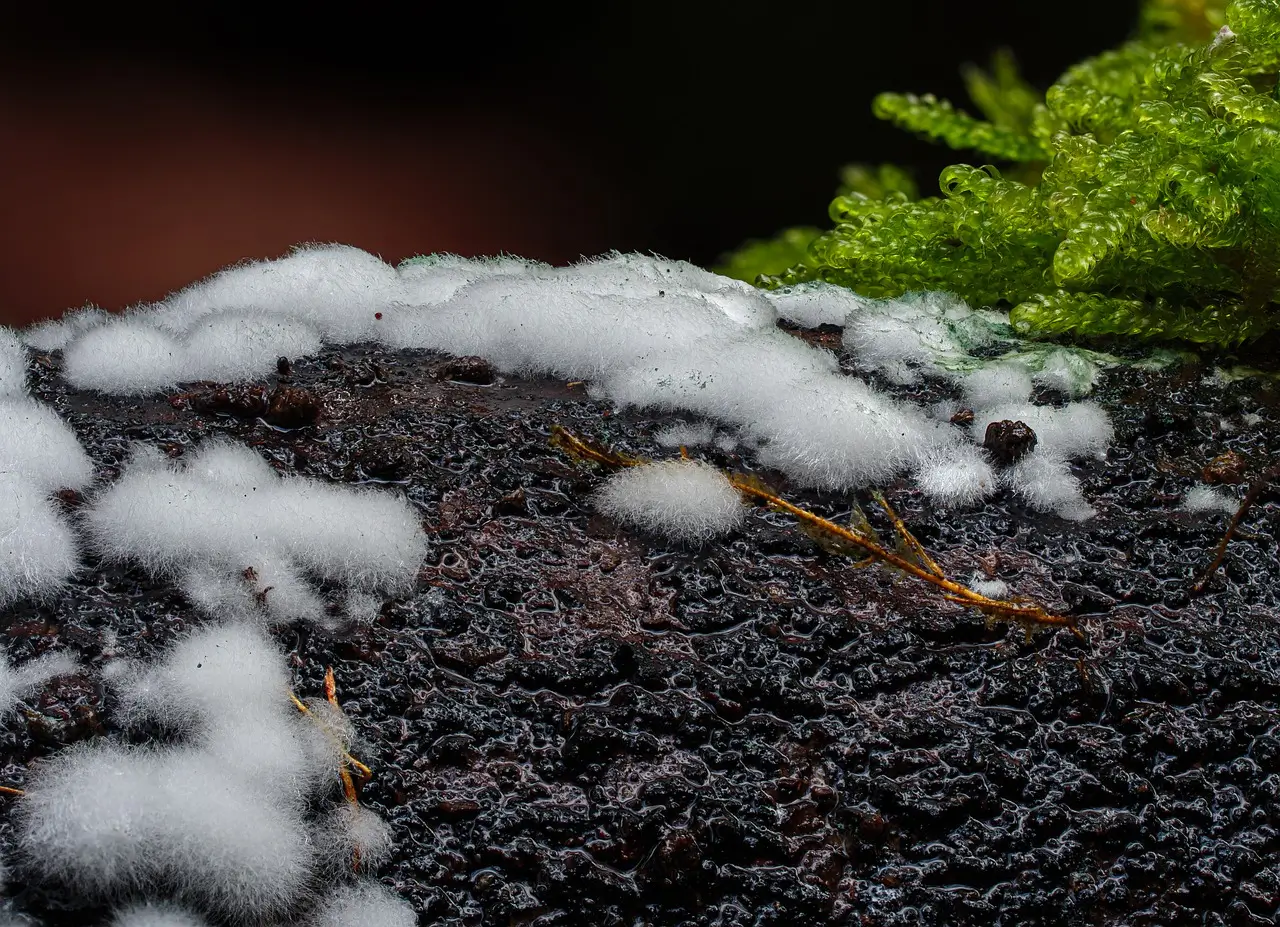Mold and mildew – often used interchangeably, but are they truly the same? This guide clarifies the key differences, explores their health risks, and offers tips for identification, prevention, and removal. Breathe easy with the facts!
Mold vs Mildew: Demystifying the Bathroom Buddies (and Why They’re Not Really Friends)
Spotting unwanted growth on your bathroom walls or shower tiles can be alarming. Is it mold? Mildew? While the terms are often used interchangeably, there are key distinctions between these bathroom foes. Understanding these differences is crucial for taking appropriate action and protecting your health.
This blog delves into the world of mold and mildew, exploring:
- Their biological differences: Mold and mildew belong to the same kingdom (Fungi), but they’re distinct species with different characteristics.
- Appearance and growth patterns: Learn how to identify mold and mildew based on their visual cues.
- Health risks: While both can trigger allergies and respiratory problems, mold poses a greater health risk.
- Prevention and removal strategies: Discover effective methods to prevent mold and mildew growth and remove existing infestations.
The Fungal Family Tree: Mold vs Mildew
Both mold and mildew are types of fungi, but they occupy different branches of the fungal family tree:
- Mold: Molds are multicellular filamentous fungi. They reproduce by releasing spores that can travel through the air and land on suitable surfaces, where they germinate and form new colonies. Mold comes in a variety of colors, textures, and sizes.
- Mildew: Mildew is a type of mold that typically appears powdery or flat and white, gray, or yellowish in color. Mildew generally grows on the surface of damp organic materials like fabrics, food, and bathroom surfaces.
The key difference lies in their structure and growth patterns. Mold has a more complex structure with root-like filaments that penetrate beneath the surface they’re growing on. Mildew, on the other hand, typically remains more superficial.
A Tale of Two Appearances: Identifying Mold and Mildew
While both mold and mildew can be unpleasant to find, some visual cues can help you distinguish between them:
Mold:
- Color: Mold can appear in various colors, including black, green, white, brown, and even orange or pink.
- Texture: Mold can be fuzzy, slimy, or leathery in texture.
- Growth Pattern: Mold can grow in irregular patches and may appear to have a root-like structure embedded beneath the surface.
- Odor: Mold often produces a musty or earthy odor.
Mildew:
- Color: Mildew is typically white, gray, or yellowish in color.
- Texture: Mildew has a powdery or flat texture and usually appears more superficial than mold.
- Growth Pattern: Mildew typically grows in flat patches on the surface of damp materials.
- Odor: Mildew may or may not have a noticeable odor.
Important Note: If you’re unsure whether you’re dealing with mold or mildew, it’s always best to err on the side of caution and consult a professional for proper identification and recommendations.
The Health Risks: Why Mold is a Bigger Threat
While both mold and mildew can trigger allergic reactions and respiratory problems, mold poses a greater health risk for several reasons:
- Mold Spores: Mold reproduces by releasing microscopic spores that can travel through the air and be inhaled. These spores can irritate the respiratory system, causing coughing, sneezing, and difficulty breathing. For individuals with allergies or asthma, mold exposure can worsen symptoms and trigger attacks.
- Mold Toxins: Some mold species produce mycotoxins, which are harmful substances that can cause various health problems, including respiratory issues, skin irritation, and even neurological problems.
Mildew, on the other hand, is generally less aggressive and less likely to produce harmful toxins. However, it can still trigger allergies and irritate the respiratory system.
Prevention is Key: Keeping Mold and Mildew at Bay
The best approach to mold and mildew is to prevent them from growing in the first place. Here are some effective prevention strategies:
- Control Moisture: Mold and mildew thrive in damp environments. Maintain proper ventilation in bathrooms and kitchens to prevent moisture buildup. Use exhaust fans during showers and cooking activities.
- Fix Leaks Promptly: Address any leaks promptly to prevent water damage and moisture buildup, which create ideal conditions for mold and mildew growth.
- Increase Ventilation: Ensure proper ventilation in bathrooms and kitchens by opening windows or using exhaust fans to remove moisture-laden air.
- Clean Up Spills Immediately: Don’t let spills sit. Clean up spills promptly to prevent moisture buildup and potential mold or mildew growth.
- Maintain Low Humidity Levels: Aim for a humidity level between 30% and 50% indoors. Use a dehumidifier in areas prone to moisture problems.
- Dry Damp Surfaces Thoroughly: After cleaning showers, bathtubs, and sinks, ensure they dry completely to prevent moisture buildup. Wipe down surfaces with a microfiber cloth or squeegee.
- Clean Regularly: Regularly clean bathrooms and kitchens with a disinfectant solution to remove potential mold spores and mildew growth. Pay attention to areas prone to moisture buildup, like shower tiles and grout lines.
By implementing these preventive measures, you can significantly reduce the risk of encountering mold and mildew in your home.
Eradicating the Enemy: Mold and Mildew Removal Strategies
If you discover mold or mildew growth, prompt action is crucial to prevent further infestation and potential health problems. The approach to removal depends on the severity of the infestation:
- Small Mildew Patches: For small mildew patches on non-porous surfaces (like bathroom tiles or shower curtains), you can often tackle the problem yourself. Mix a solution of one part white vinegar and one part water in a spray bottle. Spray the affected area, let it sit for 30 minutes, then scrub with a stiff brush and rinse thoroughly. Ensure the area dries completely afterwards.
- Larger Mold Growth: For larger mold infestations or mold growth on porous surfaces (like drywall or wood), professional remediation may be necessary. Mold remediation involves identifying the type of mold, containing the affected area to prevent spore dispersal, and safely removing the mold growth. Professionals have the expertise and equipment to handle these situations effectively.
Important Note: When dealing with mold, wear protective gear like gloves, a respirator, and eye protection to minimize exposure to spores.
Conclusion: Knowledge is Power in the Battle Against Mold and Mildew
Mold and mildew, while often confused, are distinct threats to your home environment.
Understanding their differences, potential health risks, and effective prevention and removal strategies empowers you to take control. By maintaining a clean and dry environment, implementing preventive measures, and taking prompt action when necessary, you can create a healthy and mold-free living space for yourself and your family.
Looking for more information on creating a healthy home environment? Check out our blog on “Indoor Air Quality: Unveiling the Hidden Threats and Creating a Breath of Fresh Air” for tips on improving your indoor air quality and reducing exposure to allergens and pollutants.
Remember, a proactive approach is key to winning the battle against mold and mildew. With the right knowledge and actions, you can breathe easy and enjoy a healthy home.

